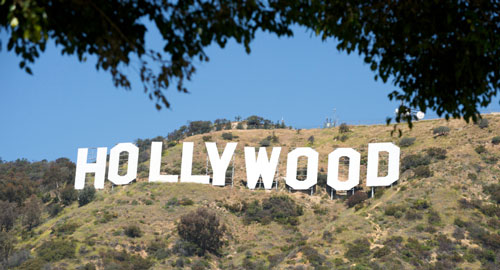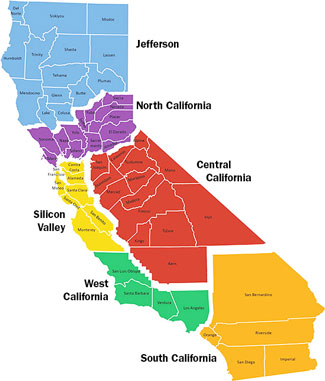
If one California is already too much for some people, would six be a nightmare?
The idea of breaking the Golden State into several nuggets has been proposed hundreds of times since the 1850s, but has rarely been taken seriously. This time, however, enthusiastic backing by billionaire venture capitalist Tim Draper is attracting nationwide attention. And he has already submitted more than enough petition signatures that, if verified, will put the proposal on the November 2016 statewide ballot.
Draper's goal is to break up what he sees as a systemically ineffective and wasteful government that is no longer responsive to citizens. He's putting his money where his mouth is, having spent nearly $5 million so far.
His idea is to split California into six states - he even has names for them - that would differ wildly in population, geography, demographics and dairying. Here's a look at them:
 Jefferson – The heavily forested, sparsely populated (just 949,000) and most northerly part of California. It was home to about 120 typically small and often pasture-based dairies in 2013. Most are located near Orland and Eureka. Average income per capita is the second lowest of the six proposed new states.
Jefferson – The heavily forested, sparsely populated (just 949,000) and most northerly part of California. It was home to about 120 typically small and often pasture-based dairies in 2013. Most are located near Orland and Eureka. Average income per capita is the second lowest of the six proposed new states.North California – Best known as California's wine region and the Marin County "love & peace" culture in the 1960s. It was home to 128 dairies in 2013, primarily south of Sacramento and north of San Francisco. Its population is about 3.8 million people and average income is the second highest.
Silicon Valley – Encompasses the San Francisco Bay area and the coastal area to the south, nearly to Paso Robles and San Simeon. Its population is about 6.8 million and average income is by far the highest. It was home to just three dairies in 2013.
Central California – California's agricultural breadbasket and dairy heartland, stretching from Stockton to Bakersfield. Its population is about 4.2 million people and average income is the lowest. With about 1.6 million cows, it would continue to be the largest dairy state in the U.S.
West California – Comprised of four coastal counties from San Luis Obispo to Los Angeles, it has the largest population of 11.6 million and the third-highest income. It was home to just three dairies in 2013.
South California– Comprised of Orange, San Diego and Imperial Counties, and the Inland Empire region of Riverside and San Bernardino Counties. It has the second-largest population (10.8 million) and third-lowest income. It was home to 100 dairies in 2013, mainly in and east of the Chino Valley.








